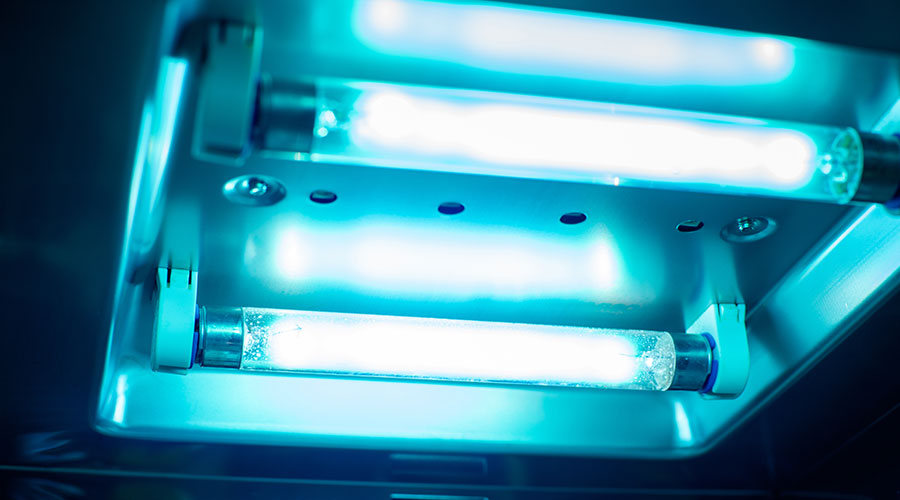Disinfection is a critical part of any infection control program, and sometimes standard chemicals alone will not be enough to neutralize germs. Modern technology has sought to introduce new means of disinfection, with Ultraviolet-C (UV-C) light being one of these advancements.
UV-C is obviously not used in standard lighting, as exposure to it is harmful to humans. However, in contained chambers or units, it can irradiate and kill off pathogens. These chambers use UV-C lamps to sanitize objects placed within them by bathing items in harsh light. Various objects can be placed in the chambers, such as medical devices and personal protective equipment (PPE). Other units can be wheeled into a patient's room to disinfect hard surfaces.
The benefits of using UV-C light are numerous, however, there are three key advantages of this technology healthcare facility managers should note.
1: No residue compared to chemicals
Traditional disinfection involves numerous different chemicals which can be potentially hazardous to staff if touched or inhaled, according to David J. Weber, MD, MPH, medical director for the department of infection prevention at UNC Medical Center.
Additionally, these chemicals can leave behind residue on medical devices, posing a hazard to patients who may come in direct contact with them.
“For example, ultrasound probes are going to be generally inserted into a body cavity, and if those chemicals remain on the device, they can damage the mucosa and lead to inflammation,” says Weber.
Fortunately, UV-C leaves no residue on disinfected surfaces, meaning there is no need to rinse a medical device or related surfaces after its use.
2: Safe and secure to use
While UV-C exposure can be hazardous at certain levels to humans, chambers that use UV-C for disinfection have safety measures built into them, says Weber. The UV-C lamps do not turn on until the chamber is locked and closed.
“The chambers are designed so that the lights could not go on unless the chamber was properly closed and sealed,” says Weber. “The chamber is built so that the UV-C light, which really does not penetrate glass or other shielding, could not possibly leak out of the out of the chamber. So, there is no danger to the user of the chamber.”
3: Quicker disinfection
The traditional methods of disinfection, which usually involve manual work, tend to take time and diligence on the staff’s part. However, UV-C is faster than any other known way of providing disinfection, whether it be a chamber producing gases or simply using chemicals, according to Weber.
Weber compares UV-C to high-level disinfectant wipes, which require staff to put on gloves and then go over every contaminated surface with them. This can become difficult for staff to realistically accomplish in a timely manner. In comparison, UV-C lighting can touch nearly every surface and rapidly disinfect them.
“It is quite fast, meaning 60 seconds to a couple of minutes just to disinfect,” Weber says. “There is certainly the potential for human error with traditional chemicals whereas putting something in a UV-C chamber is essentially error free.”
Jeff Wardon, Jr. is the assistant editor for the facilities market.

 Design Plays a Role in the Future of Healthcare
Design Plays a Role in the Future of Healthcare Cedar Hill Regional Medical Center GW Health Officially Opens
Cedar Hill Regional Medical Center GW Health Officially Opens Designing Healthcare Facilities for Pediatric and Geriatric Populations
Designing Healthcare Facilities for Pediatric and Geriatric Populations Kaiser Permanente Announces New Hospital Tower at Sunnyside Medical Center
Kaiser Permanente Announces New Hospital Tower at Sunnyside Medical Center Building Disaster Resilience Through Collaboration
Building Disaster Resilience Through Collaboration